-
 Bitcoin
Bitcoin $105,278.9859
4.61% -
 Ethereum
Ethereum $2,414.7741
8.20% -
 Tether USDt
Tether USDt $1.0007
0.05% -
 XRP
XRP $2.1600
7.53% -
 BNB
BNB $639.5433
3.75% -
 Solana
Solana $144.3830
9.37% -
 USDC
USDC $1.0001
0.02% -
 TRON
TRON $0.2742
3.84% -
 Dogecoin
Dogecoin $0.1640
8.57% -
 Cardano
Cardano $0.5811
7.49% -
 Hyperliquid
Hyperliquid $37.2466
5.28% -
 Sui
Sui $2.8243
14.84% -
 Bitcoin Cash
Bitcoin Cash $460.8816
2.22% -
 Chainlink
Chainlink $12.9580
11.75% -
 UNUS SED LEO
UNUS SED LEO $9.1359
1.23% -
 Avalanche
Avalanche $18.2302
10.30% -
 Stellar
Stellar $0.2463
7.80% -
 Toncoin
Toncoin $2.9151
7.18% -
 Shiba Inu
Shiba Inu $0.0...01163
9.79% -
 Hedera
Hedera $0.1532
14.01% -
 Litecoin
Litecoin $85.3310
6.29% -
 Monero
Monero $308.8215
2.90% -
 Ethena USDe
Ethena USDe $1.0007
0.03% -
 Polkadot
Polkadot $3.4259
9.42% -
 Dai
Dai $1.0002
0.01% -
 Bitget Token
Bitget Token $4.1742
3.19% -
 Uniswap
Uniswap $6.8272
8.53% -
 Pepe
Pepe $0.0...09939
12.29% -
 Pi
Pi $0.5358
6.03% -
 Aave
Aave $257.3092
12.83%
Will the low cross star reverse? What additional conditions need to be met?
The low cross star signals potential bullish reversal in crypto downtrends but requires volume and indicator confirmation.
Jun 24, 2025 at 02:50 pm

Understanding the Low Cross Star Pattern
The low cross star is a candlestick pattern often observed in cryptocurrency trading charts. It typically appears during a downtrend and consists of a small-bodied candle with long upper and lower shadows, resembling a cross or a doji. Traders look for this pattern as a potential signal of reversal from a bearish trend to a bullish one.
In the context of cryptocurrency markets, where volatility is high and price movements are rapid, recognizing such patterns becomes crucial. However, it’s important to understand that the low cross star alone isn’t sufficient to confirm a reversal. Additional confirmation is necessary before making any trade decisions based on this pattern.
Key point: The low cross star indicates indecision in the market, especially after a strong downtrend.
What Conditions Must Be Met for a Reversal?
For the low cross star to suggest a possible reversal, certain conditions must align:
- Prior Downtrend: There should be a clear and sustained downward movement in price before the appearance of the low cross star.
- Volume Confirmation: A noticeable increase in volume during or after the formation of the cross star can indicate stronger buyer interest.
- Bullish Follow-through Candle: The candle immediately following the low cross star should close higher than the cross star’s close, preferably with increased volume.
- Support Level Proximity: If the low cross star forms near a known support level or a Fibonacci retracement level, the probability of a reversal increases.
- Momentum Indicator Confirmation: Tools like RSI (Relative Strength Index) or MACD (Moving Average Convergence Divergence) should show signs of oversold conditions or bullish divergence.
Important: Without these supporting conditions, the low cross star may simply represent a pause rather than a full reversal.
How to Analyze Volume Around the Low Cross Star
Volume plays a critical role in confirming the strength of any candlestick pattern. In the case of the low cross star, traders should closely examine the volume during the formation of the pattern and in the subsequent candles.
- During the low cross star formation, volume may be lighter than average, suggesting hesitation among traders.
- If the next candle sees a spike in volume along with a higher close, it signals increasing buying pressure.
- Conversely, if volume remains low after the cross star, the downtrend may continue.
To implement this analysis:
- Open your preferred charting tool (e.g., TradingView or Binance native tools).
- Enable the volume histogram below the price chart.
- Look for spikes or surges in volume around the time of the low cross star and its follow-up candle.
Tip: Combine volume analysis with moving averages to filter out false signals.
Using Technical Indicators to Confirm the Reversal Signal
Relying solely on candlestick patterns can be risky. To enhance the reliability of the low cross star, incorporate technical indicators into your analysis.
Here’s how you can integrate them step-by-step:
- Add RSI (14) to your chart. A reading below 30 suggests the asset is oversold, increasing the likelihood of a bounce.
- Use MACD to detect momentum shifts. A bullish crossover above the signal line can reinforce the reversal idea.
- Overlay Fibonacci retracement levels from the recent swing high to low. If the low cross star appears near key retracement levels (like 61.8%), it adds credibility to the pattern.
These tools help reduce the number of false positives when interpreting candlestick patterns in fast-moving crypto markets.
Note: Always backtest your strategy using historical data before applying it in live trading.
Practical Steps to Trade the Low Cross Star Reversal
If you decide to trade based on the low cross star pattern, here’s a structured approach to take:
- Wait for the low cross star to fully form at the end of a downtrend.
- Observe the next candle. Only consider entering a long position if it closes above the high of the cross star.
- Place a stop-loss order just below the low of the cross star to manage risk.
- Set a take-profit target based on recent resistance levels or using a 1:2 risk-reward ratio.
For example, suppose Bitcoin forms a low cross star at $25,000 during a downtrend. The next candle closes at $25,300 with increased volume. You could enter a long position at $25,300, set a stop loss at $24,900, and aim for a target of $25,700.
Caution: Avoid entering trades too early; wait for confirmation before committing capital.
Frequently Asked Questions
Q: Can the low cross star appear in both uptrends and downtrends?
A: Yes, but its significance varies depending on context. When found in an uptrend, it may signal a potential bearish reversal or consolidation phase, not necessarily a strong reversal like in a downtrend.
Q: How reliable is the low cross star in highly volatile crypto markets?
A: While it can still provide useful signals, volatility increases the chance of false signals, so it's best used with other confirming factors like volume and technical indicators.
Q: What timeframes work best for identifying the low cross star pattern?
A: The pattern is most reliable on higher timeframes such as the 4-hour or daily charts. Lower timeframes like 15-minute or 1-hour charts tend to produce more noise and less reliable signals.
Q: Is there a difference between a low cross star and a doji?
A: Visually, they’re similar, but the context defines their meaning. A doji can appear anywhere, while the low cross star specifically occurs after a downtrend and has implications for reversal.
Disclaimer:info@kdj.com
The information provided is not trading advice. kdj.com does not assume any responsibility for any investments made based on the information provided in this article. Cryptocurrencies are highly volatile and it is highly recommended that you invest with caution after thorough research!
If you believe that the content used on this website infringes your copyright, please contact us immediately (info@kdj.com) and we will delete it promptly.
- Little Pepe: The Next Ethereum 9000% Token Pump?
- 2025-06-24 18:45:12
- Bitcoin Holdings Strategy: Riding the $BTC Wave Like a Wall Street Pro
- 2025-06-24 18:25:12
- Mastercard, Fiserv, and Stablecoin Adoption: A New Era for Payments?
- 2025-06-24 19:05:12
- Mastercard, USDG Stablecoin, and Fiserv: Revolutionizing Payments or Just Another Fad?
- 2025-06-24 18:45:12
- XRP Price Surges Amid Market Tensions: A Token Rally to Watch
- 2025-06-24 19:26:05
- Middle East, Financial Safety, and International Crisis: Navigating the Volatility
- 2025-06-24 19:10:12
Related knowledge
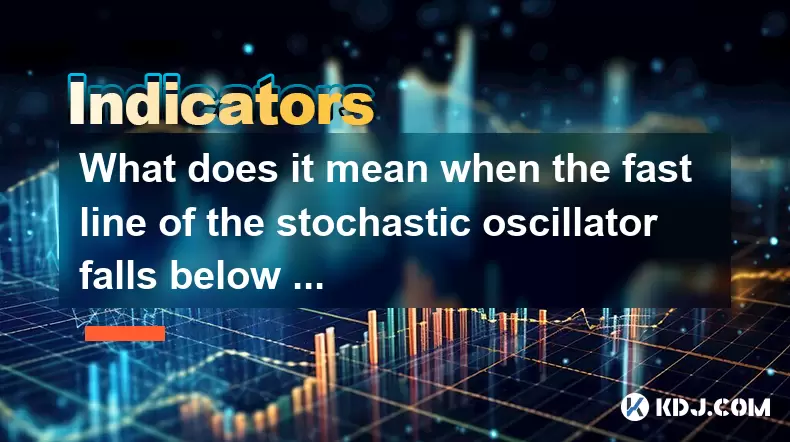
What does it mean when the fast line of the stochastic oscillator falls below the slow line?
Jun 24,2025 at 07:07pm
Understanding the Stochastic OscillatorThe stochastic oscillator is a momentum indicator used in technical analysis to assess overbought or oversold conditions in financial markets, including cryptocurrencies. It consists of two lines: the fast line (typically %K) and the slow line (typically %D). The fast line represents the current closing price relat...
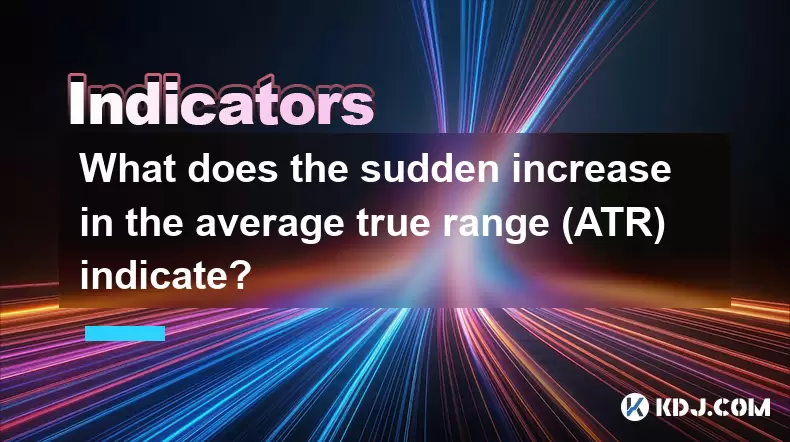
What does the sudden increase in the average true range (ATR) indicate?
Jun 24,2025 at 06:42pm
Understanding the Average True Range (ATR) in Cryptocurrency TradingThe Average True Range (ATR) is a technical indicator used by traders to measure market volatility. In the context of cryptocurrency, where prices can swing dramatically within short periods, ATR becomes an essential tool for assessing potential price movements. The ATR does not indicat...
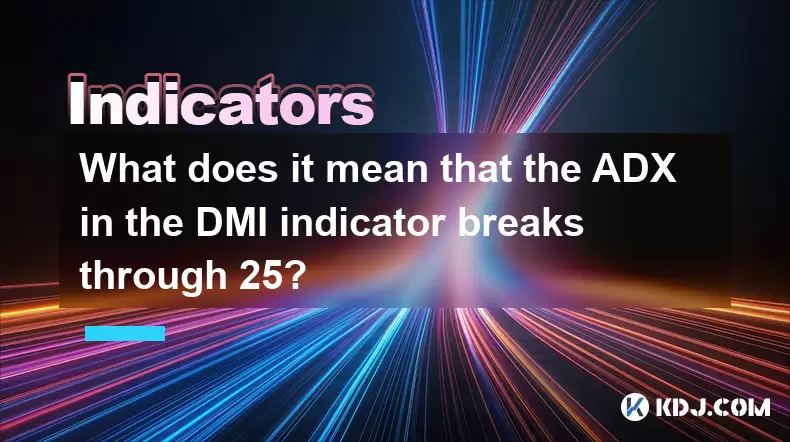
What does it mean that the ADX in the DMI indicator breaks through 25?
Jun 24,2025 at 06:21pm
Understanding the DMI Indicator and Its ComponentsThe Directional Movement Index (DMI) is a technical analysis tool used to identify the strength and direction of a trend in cryptocurrency markets. The indicator consists of two primary lines: the Positive Directional Indicator (+DI) and the Negative Directional Indicator (-DI). These lines help traders ...
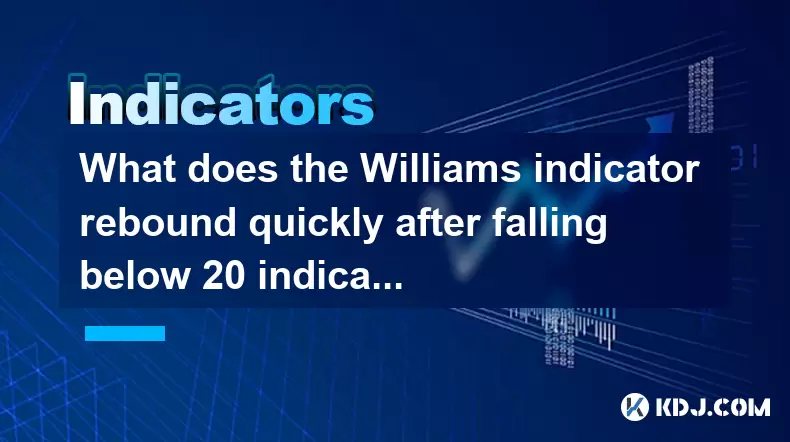
What does the Williams indicator rebound quickly after falling below 20 indicate?
Jun 24,2025 at 04:49pm
Understanding the Williams %R IndicatorThe Williams %R indicator, also known as Williams Percent Range, is a momentum oscillator used in technical analysis to identify overbought and oversold conditions in financial markets, including cryptocurrencies. It was developed by Larry Williams and typically operates on a scale from 0 to -100. In the context of...
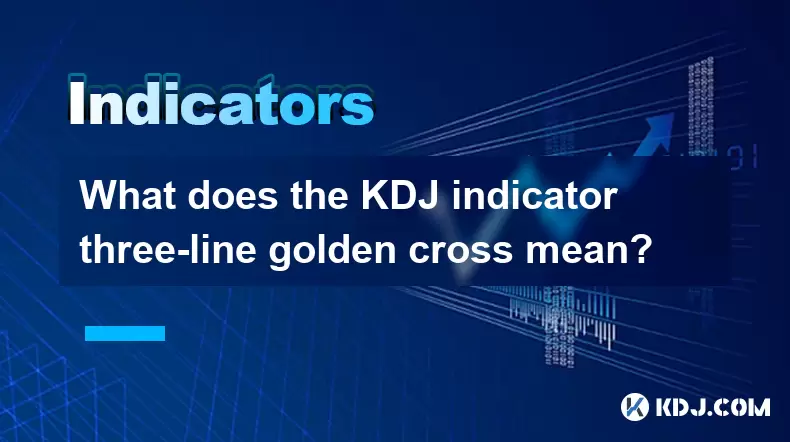
What does the KDJ indicator three-line golden cross mean?
Jun 24,2025 at 05:28pm
Understanding the KDJ Indicator in Cryptocurrency TradingThe KDJ indicator is a technical analysis tool widely used in cryptocurrency trading to identify potential buy and sell signals. It combines elements of two other indicators: the Stochastic Oscillator and the J line, which acts as a signal line. The KDJ consists of three lines — K, D, and J — each...
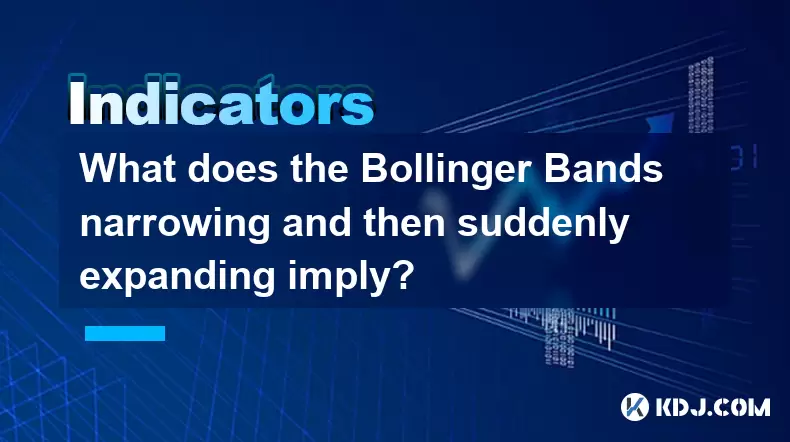
What does the Bollinger Bands narrowing and then suddenly expanding imply?
Jun 24,2025 at 05:56pm
Understanding Bollinger Bands in Cryptocurrency TradingBollinger Bands, a popular technical analysis tool, are widely used in cryptocurrency trading to assess price volatility and potential trend reversals. The indicator consists of three lines: a Simple Moving Average (SMA) in the middle, typically set at 20 periods, with two outer bands that represent...

What does it mean when the fast line of the stochastic oscillator falls below the slow line?
Jun 24,2025 at 07:07pm
Understanding the Stochastic OscillatorThe stochastic oscillator is a momentum indicator used in technical analysis to assess overbought or oversold conditions in financial markets, including cryptocurrencies. It consists of two lines: the fast line (typically %K) and the slow line (typically %D). The fast line represents the current closing price relat...

What does the sudden increase in the average true range (ATR) indicate?
Jun 24,2025 at 06:42pm
Understanding the Average True Range (ATR) in Cryptocurrency TradingThe Average True Range (ATR) is a technical indicator used by traders to measure market volatility. In the context of cryptocurrency, where prices can swing dramatically within short periods, ATR becomes an essential tool for assessing potential price movements. The ATR does not indicat...

What does it mean that the ADX in the DMI indicator breaks through 25?
Jun 24,2025 at 06:21pm
Understanding the DMI Indicator and Its ComponentsThe Directional Movement Index (DMI) is a technical analysis tool used to identify the strength and direction of a trend in cryptocurrency markets. The indicator consists of two primary lines: the Positive Directional Indicator (+DI) and the Negative Directional Indicator (-DI). These lines help traders ...

What does the Williams indicator rebound quickly after falling below 20 indicate?
Jun 24,2025 at 04:49pm
Understanding the Williams %R IndicatorThe Williams %R indicator, also known as Williams Percent Range, is a momentum oscillator used in technical analysis to identify overbought and oversold conditions in financial markets, including cryptocurrencies. It was developed by Larry Williams and typically operates on a scale from 0 to -100. In the context of...

What does the KDJ indicator three-line golden cross mean?
Jun 24,2025 at 05:28pm
Understanding the KDJ Indicator in Cryptocurrency TradingThe KDJ indicator is a technical analysis tool widely used in cryptocurrency trading to identify potential buy and sell signals. It combines elements of two other indicators: the Stochastic Oscillator and the J line, which acts as a signal line. The KDJ consists of three lines — K, D, and J — each...

What does the Bollinger Bands narrowing and then suddenly expanding imply?
Jun 24,2025 at 05:56pm
Understanding Bollinger Bands in Cryptocurrency TradingBollinger Bands, a popular technical analysis tool, are widely used in cryptocurrency trading to assess price volatility and potential trend reversals. The indicator consists of three lines: a Simple Moving Average (SMA) in the middle, typically set at 20 periods, with two outer bands that represent...
See all articles
























































































